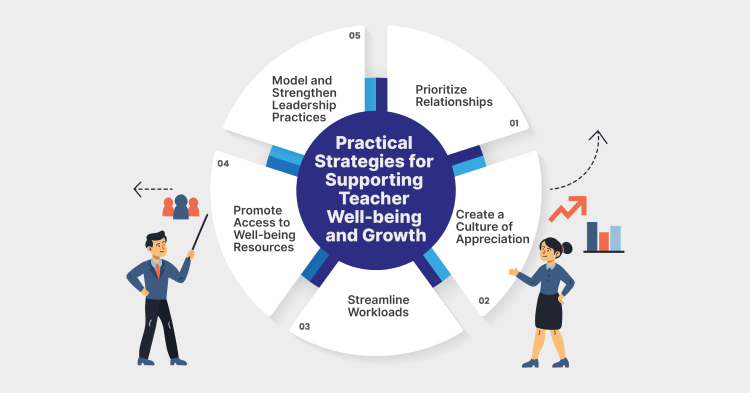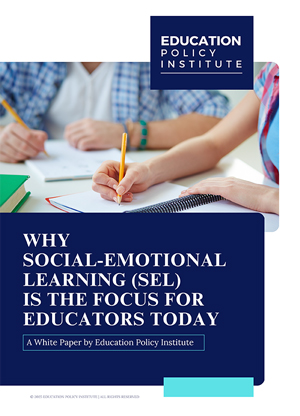As education evolves to meet the changing needs of students and communities, the role of school leaders has become more significant than ever. School leaders face the challenge of supporting both student achievement and teacher growth. Balancing these priorities is not just a task of management—it is an act of meaningful leadership. By building environments where both students and teachers feel valued, encouraged, and equipped to succeed, schools can become vibrant communities of learning and progress.
True leadership in education involves more than setting policies or enforcing rules. It means being present, responsive, and intentional in cultivating a culture that prioritizes well-being, creativity, and collaboration. In the sections ahead, we explore how this encouragement and balance can be achieved by school leaders.
Leadership That Listens, Learns, and Leads
Effective school leadership begins with listening. Leaders who take time to understand the needs of both teachers and students build stronger, more trusting environments. When administrators actively seek input, whether through informal conversations, structured surveys, or collaborative meetings, they create a sense of shared responsibility and purpose. Listening, however, is only the beginning. The most impactful leaders also learn from what they hear—about classroom challenges, resource gaps, and what motivates their teams.
Learning involves more than collecting data; it means reflecting on feedback and acting on it thoughtfully. This could involve adjusting school policies, providing relevant training, or reallocating resources. A leader who learns is one who remains flexible and aware, recognizing that education is dynamic and constantly evolving. And finally, leading means making informed decisions rooted in empathy, equity, and long-term vision. This kind of leadership doesn’t operate from a distance but stays closely connected to the everyday experiences of both teachers and students.
From Vision to Action: Leading with Purpose
Every school leader has a vision, but turning that vision into daily practice is what makes the real difference. Purpose-driven leadership is grounded in clarity, consistency, and compassion. It requires knowing what the school stands for and aligning decisions, policies, and relationships with those values.
Leaders must be visible and present—not just in their offices, but in classrooms, hallways, and community events. They should be approachable, ready to listen, and willing to act when challenges arise. Transparency and honest communication build trust, while purposeful action builds momentum.
By connecting their goals to meaningful outcomes for both teachers and students, school leaders can create lasting impact. Purpose-driven leadership inspires everyone to move in the same direction, with a shared sense of mission and hope for the future. /p>
Encouraging Innovation Inside the Classroom
Creating opportunities for innovation means giving teachers room to explore, experiment, and evolve. When school leaders support risk-taking and creative teaching methods, classrooms become more vibrant and adaptive. Innovation doesn’t always mean adopting the latest tech tool—it can be as simple as allowing educators to try new ways to engage students, rearrange learning environments, or develop interdisciplinary projects.
One of the most effective ways school leaders can promote innovation is by reducing the fear of failure. When educators know they won’t be penalized for trying something new, they’re more likely to take bold steps that can lead to meaningful improvements. Leaders can also support innovation by ensuring teachers have access to relevant resources, professional learning opportunities, and time to collaborate.
Recognizing and celebrating creative teaching practices further fuels a culture of innovation. Whether through informal shout-outs in meetings or formal recognition, these gestures show that leadership values ingenuity. Over time, schools that prioritize innovation tend to see increased teacher motivation and deeper student engagement.
Creating Spaces Where Students and Teachers Excel Together
An ideal learning environment supports everyone within it. When leaders design systems and cultures that lift both students and teachers, the entire school community flourishes. This requires moving away from top-down management models and building shared spaces where collaboration and mutual respect thrive.
School leaders can encourage teachers to involve students in shaping classroom norms or selecting learning topics. Likewise, student voice should play a role in shaping school policies and activities. When both educators and learners feel heard, a more inclusive, respectful culture emerges.
Physical spaces also matter. Thoughtfully designed classrooms and common areas can improve comfort, reduce stress, and encourage creative interaction. Ensuring both students and teachers have access to quiet workspaces, technology, and basic supplies is essential to this.
Ultimately, schools function best when leadership takes a whole-community approach. Policies, programs, and communication strategies should be designed to meet the needs of all stakeholders—not just in theory but in daily practice.
Transforming School Culture Through Shared Opportunity
The culture of a school is shaped by its values, relationships, and everyday actions. Leaders play a key role in defining and sustaining this culture, and shared opportunity is one of the most powerful drivers of positive change. When leadership ensures that both teachers and students have access to growth pathways, a spirit of equity and empowerment develops.
For teachers, this could mean offering differentiated professional learning based on individual goals or inviting them to take part in school improvement initiatives. For students, it might involve access to advanced courses, mentorship programs, or leadership roles. Equal access doesn’t mean giving everyone the same thing—it means meeting people where they are and helping them move forward.
School culture also improves when everyone is held to high expectations—and given the tools to reach them. Leaders can create policies that encourage accountability while also providing support. A strong culture of opportunity recognizes effort and progress as much as achievement, promoting a growth mindset across the entire school.
Building Strong Foundations for Holistic Success
Holistic success means more than test scores or graduation rates. It includes emotional intelligence, collaboration, adaptability, and lifelong learning. School leaders who understand this broader picture are more likely to build systems that support both academic and personal growth.
For educators, this might mean integrating social-emotional learning into their own development or being encouraged to build deeper relationships with students. For students, it means having access to extracurricular activities, emotional support services, and a curriculum that reflects real-world challenges and opportunities.
Leadership that promotes holistic success doesn’t focus on quick wins. Instead, it prioritizes sustainability—making sure that systems, supports, and expectations are consistent and adaptable. This kind of environment helps every member of the school community reach their potential in a balanced and meaningful way.
Practical Strategies for Supporting Teacher Well-being and Growth
To effectively support educators, school leaders can adopt practical and actionable strategies that build long-term trust and motivation:

- Prioritize Relationships: Make time for consistent, respectful communication with teachers. Small acts like regular check-ins or acknowledgment of effort go a long way in building trust.
- Create a Culture of Appreciation: Publicly recognize teacher achievements, both big and small. This recognition reinforces value and boosts morale.
- Streamline Workloads: Remove non-essential tasks and offer planning time during the school day. This helps reduce burnout and allows teachers to focus on instruction.
- Promote Access to Well-being Resources: Offer mental health support, flexible time when needed, and access to wellness activities that support emotional balance.
- Model and Strengthen Leadership Practices: Stay transparent and consistent in decisions. Be present, listen actively, and lead with empathy and purpose.
The Ripple Effect of Investing in Teachers
Investing in teachers goes far beyond professional development workshops. It encompasses meaningful recognition, emotional well-being, career growth, and sustained mentorship. When teachers feel valued, they are more likely to remain in the profession, show greater commitment, and build stronger connections with students.
One major aspect of investment is ongoing learning. High-quality training programs that respond to classroom realities can equip educators with tools to handle emerging challenges. But investment also means protecting teacher time. By reducing unnecessary administrative tasks or giving teachers dedicated periods for planning and collaboration, leaders allow them to focus on what matters most: teaching.
Another crucial element is emotional support. Teaching can be emotionally draining, and leaders who acknowledge this by promoting mental wellness initiatives and offering personal check-ins demonstrate that they care. The benefits of these investments extend beyond the teachers themselves. When educators are supported, students benefit from more engaged, motivated, and emotionally present adults in the classroom.
Conclusion
Strong school leadership is not about authority; it’s about creating a shared space where everyone can thrive. By listening deeply, encouraging creativity, investing in well-being, and staying connected to the needs of both teachers and students, leaders help build vibrant educational communities. The journey from intention to action is ongoing, but with purpose, compassion, and courage, school leaders can shape environments where growth, respect, and opportunity are not just goals, but daily realities for all involved.





